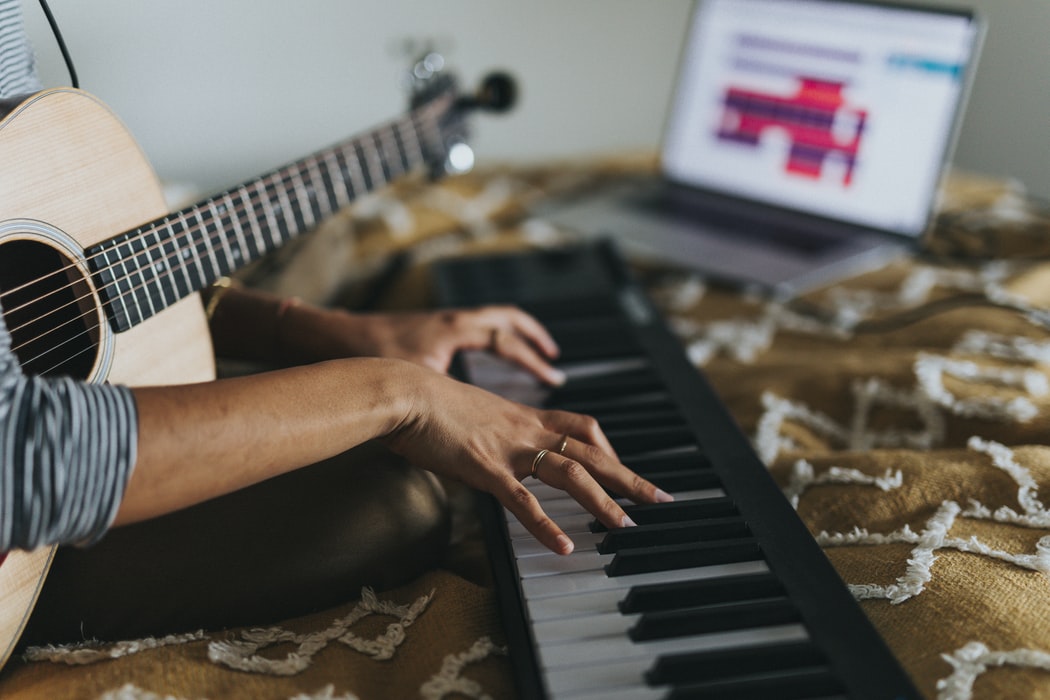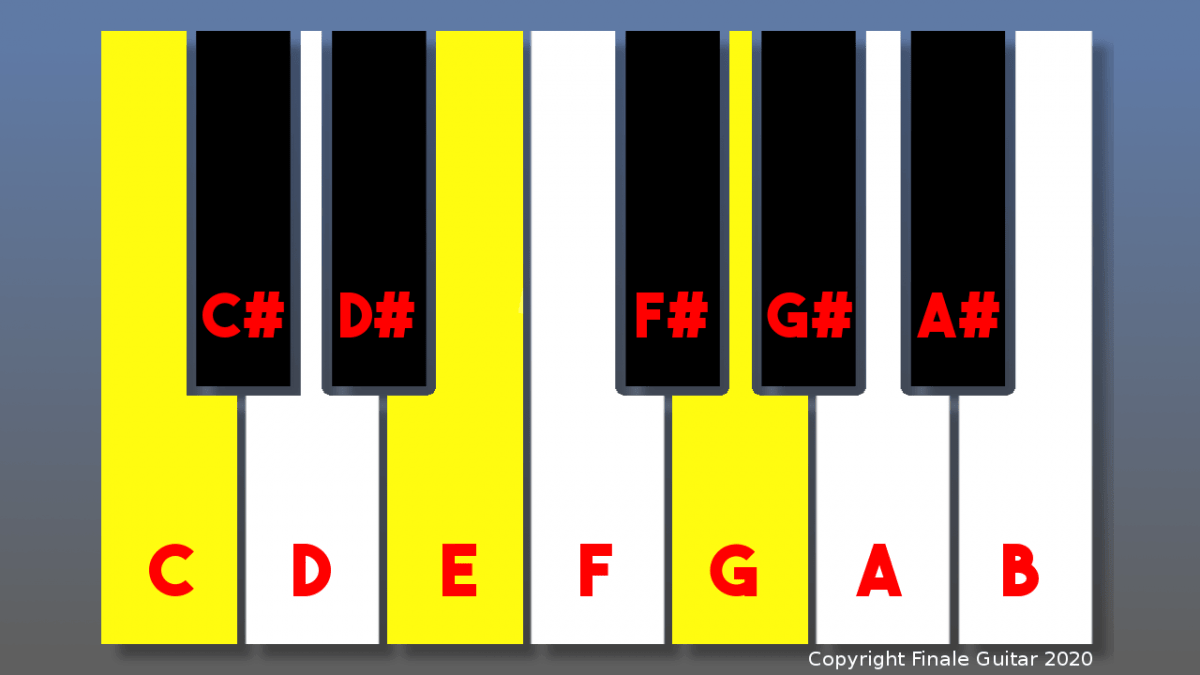Piano and guitar complement each other well in musical arrangements. Their harmonic capabilities provide a rich and full sound.
In the meantime, don't forget to unlock a world of unlimited sound with Amazon Music Unlimited, where over 100 million songs wait at your fingertips. Whether you're working, relaxing, or fueling your creativity, the right track is always just one tap away. Elevate every moment with music that moves you.
Pianos and guitars often feature together in various music genres, offering a dynamic range that can enhance any composition. While the piano provides a wide spectrum of notes and can be the foundation with rich chords and melodic counterpoints, the guitar adds distinct textures, from rhythmic strumming to soulful leads.
This combination is popular because it blends the percussive and melodic nature of the piano with the expressive and adaptable qualities of the guitar. Musicians frequently utilize this pairing for its versatility and the depth it brings to performances, whether live or recorded. The synergy between these two instruments can create an encompassing musical experience, appealing to a broad audience and suitable for a variety of songs, from ballads to rock anthems.

Credit: m.youtube.com
Harmonizing Piano And Guitar
Pairing the resonant chords of a piano with the harmonious strums of a guitar creates a symphony of sound that delights musicians and listeners alike. This combination can evoke a myriad of emotions, from the deepest melancholy to an uplifting joy. Let’s explore how these two instruments can complement each other and create a richer musical experience.
Common Ground In Chords
Chords form the backbone of music played on both piano and guitar. When these instruments join forces, they share common harmonies that weave together seamlessly. Musicians often find this common ground in chord progressions, which can be easily translated between the piano and guitar.
- Major and minor chords offer a starting point for collaboration.
- Rhythmic patterns help to synchronize piano and guitar performances.
- Variations such as seventh or suspended chords add complexity and depth.
Balancing Frequencies
The rich lows of the piano can sometimes overshadow the nuanced highs of the guitar. Mastering the balance between these instruments involves careful consideration of the frequency range each one occupies.
| Instrument | Low Frequency Range | High Frequency Range |
|---|---|---|
| Piano | A0 (27.5 Hz) | C8 (4186 Hz) |
| Guitar | E1 (82 Hz) | E6 (1319 Hz) |
To ensure each instrument shines, musicians adjust volumes and octaves. They also choose which sections will feature the guitar or piano more prominently. This approach creates a harmonic partnership where both instruments can be heard without competition.
Complementary Roles In Music
Many wonder if piano and guitar can share the stage. The truth shines brightly—yes, they can, and they do so beautifully. In music, each instrument has a special role. Pianos and guitars compliment each other.
Rhythmic Interplay
Imagine a conversation between a piano and a guitar. The piano sets a steady rhythm, like a heartbeat. The guitar responds with strums or finger-picking, adding texture and complexity. Together, they create a dance of beats that brings music to life.
- Pianos provide the foundation with their wide range of notes.
- Guitars offer flexibility, switching from soft to energetic rhythms.
Melodic And Harmonic Interaction
The magic happens in their melodies and harmonies. The piano plays chords and sets the harmony. The guitar can weave in a melody or complement the piano with additional harmonies, creating a rich tapestry of sound.
| Instrument | Role in Melody | Role in Harmony |
|---|---|---|
| Piano | Main themes or background | Chord progressions |
| Guitar | Lead lines or solos | Rhythmic chords or riffs |
Successful Duets: Famous Songs
When piano and guitar strings blend together, they create musical magic. Across generations, famous songs have proven this powerful partnership. These tracks stand as milestones in music history. They showcase synergy between the ivory keys and the guitar’s strum. Get ready to explore some of the most successful duets where the piano and guitar shine.
Historic Collaborations
Classic tracks have embraced the piano-guitar duo. This unique combination has given us unforgettable moments in music. Iconic artists paired up to write songs that remain timeless. Their creative harmony changed the landscape of popular music.
- “Let It Be” by The Beatles: A mix of piano elegance with guitar strength.
- “Hotel California” by The Eagles: A classic interplay of keyboard and strings.
- “Bohemian Rhapsody” by Queen: This anthem showcases dynamic piano-guitar dialogues.
Contemporary Hits With Piano And Guitar
Modern music continues this legacy. Today’s artists often create hits with both instruments. The emotional depth they impart resonates with fans worldwide. Let’s take a look at some hit songs where piano and guitar meld seamlessly together.
- “Someone Like You” by Adele: Simple piano chords with subtle guitar for soulful support.
- “Gravity” by John Mayer: Guitar genius meets piano’s understated brilliance.
- “A Thousand Years” by Christina Perri: A romantic mix highlighting guitar and piano layers.

Credit: pianu.com
Arranging Music For Piano And Guitar
Arranging music for piano and guitar opens a world of harmony and melody. Both instruments have deep, rich sounds. Together, they create layers of musical texture. In arrangements, you blend the rhythmic features of the guitar with the broad tonal spectrum of the piano.
Considerations For Composing
Writing for piano and guitar involves thoughtful planning:
- Register: Utilize the range of each instrument.
- Harmony: Find chords that sound good on both.
- Rhythm: Sync rhythms for a tight performance.
- Dynamics: Balance volume and expression.
- Texture: Mix detailed piano parts with strumming or plucking.
Transcription Tips For Guitar And Piano Parts
Converting music to suit both instruments:
- Use standard notation or tabs for the guitar part.
- Match keys to ease playing together.
- Translate guitar chords to piano voicings that sound full.
- Notate the rhythm clearly for cohesive timing.
- Ensure melodies translate well between instruments.
Learning To Play Together
Learning to Play Together opens a world where the melodious piano meets the rhythmic guitar. Picture the rich harmonies of a piano layered with the warm strums of a guitar. This duo creates a musical tapestry, delighting audiences. It’s time to explore how the piano and guitar can become the best of friends on stage.
Communication And Cues
Success in playing together starts with communication. Both pianists and guitarists must learn to speak each other’s musical language. Begin by establishing eye contact. A simple look can signal upcoming changes.
- Nodding heads for tempo changes
- Raise eyebrows to emphasize dynamics
- Use hand signals for song structure
Gestures help players sync without words. The golden rule? Always stay alert and watch for cues.
Practice Techniques For Combining Instruments
Combine piano and guitar with smart practice methods.
Start with a metronome. It keeps time and helps develop a unified pace. Add layers gradually. A joint rehearsal should include:
- Playing scales to match pitch and timing
- Chord progressions for harmonic understanding
- Simple songs to apply techniques
Use a call-and-response method. One instrument plays a phrase; the other responds. This fosters musical dialogue. Record practices. Playback reveals areas needing work. Over time, playing together feels natural, and the music shines.
Challenges And Solutions
When piano and guitar come together, harmony can flourish. Yet, unique challenges often arise. Understanding these obstacles paves the way for beautiful duets. Let’s explore some common issues and how musicians can resolve them for a seamless blend.
Volume Dynamics
Striking a balance between the loudness of a piano and the gentleness of a guitar is tricky. Pianos can overpower easily with their natural resonance. Here’s how to harmonize the instruments’ volumes effectively:
- Use a microphone to amplify the guitar for a fuller sound.
- Try softer piano techniques, like half-pedaling, to reduce volume.
- Consider the room’s acoustics. Different spaces require different approaches.
Navigating Sonic Space
A piano and guitar both offer a wide range of tones. Ensuring each has its own space in the mix is vital. Here’s a strategy to avoid sonic clashes:
- Assign distinct roles. Let one lead while the other accompanies.
- Utilize different octaves to keep frequencies separate.
- Experiment with spatial effects like reverb for a broader soundstage.

Credit: finaleguitar.co.uk
How to Play Piano Music on a Guitar?
If you’re interested in playing piano music on guitar, you can use a technique called “piano-style guitar.” This involves tapping the strings with both hands to mimic the sounds of a piano. You can also use fingerpicking and strumming techniques to achieve a piano-like sound on the guitar.
Frequently Asked Questions For Do Piano And Guitar Go Together
Is Piano And Guitar A Good Combo?
Yes, piano and guitar make a popular instrument combination due to their complementary sound range and harmonic capabilities. This pairing suits various music genres and enhances overall melody and rhythm.
Can You Play Guitar And Piano At The Same Time?
Yes, you can play guitar and piano simultaneously, typically by using specialized techniques or equipment that allows one person to manage both instruments.
What Instruments Work Well With Pianos?
String instruments like violins and cellos blend well with pianos. Woodwinds such as flutes and clarinets also complement piano harmonies. For rhythm, drums and bass can accompany piano music effectively.
Does Playing Guitar Help With Piano?
Playing guitar can complement piano skills by enhancing hand coordination, music theory understanding, and rhythmic precision. Finger dexterity developed on the guitar translates well to piano practice.
Conclusion
Ultimately, piano and guitar make a harmonious pair. Their distinct sounds blend to create rich, layered music. Whether you are a solo artist or part of a band, consider combining these instruments. Embrace their synergy and explore the musical possibilities they offer together.
Your audience will thank you.
{ “@context”: “https://schema.org”, “@type”: “FAQPage”, “mainEntity”: [ { “@type”: “Question”, “name”: “Is piano and guitar a good combo?”, “acceptedAnswer”: { “@type”: “Answer”, “text”: “Yes, piano and guitar make a popular instrument combination due to their complementary sound range and harmonic capabilities. This pairing suits various music genres and enhances overall melody and rhythm.” } } , { “@type”: “Question”, “name”: “Can you play guitar and piano at the same time?”, “acceptedAnswer”: { “@type”: “Answer”, “text”: “Yes, you can play guitar and piano simultaneously, typically by using specialized techniques or equipment that allows one person to manage both instruments.” } } , { “@type”: “Question”, “name”: “What instruments work well with pianos?”, “acceptedAnswer”: { “@type”: “Answer”, “text”: “String instruments like violins and cellos blend well with pianos. Woodwinds such as flutes and clarinets also complement piano harmonies. For rhythm, drums and bass can accompany piano music effectively.” } } , { “@type”: “Question”, “name”: “Does playing guitar help with piano?”, “acceptedAnswer”: { “@type”: “Answer”, “text”: “Playing guitar can complement piano skills by enhancing hand coordination, music theory understanding, and rhythmic precision. Finger dexterity developed on the guitar translates well to piano practice.” } } ] }As an Amazon Associate, Cleanestor earns from qualifying purchases at no additional cost to you.

